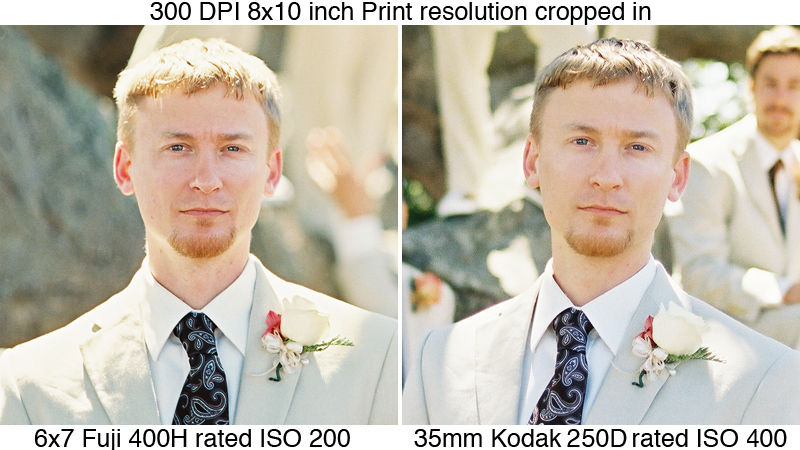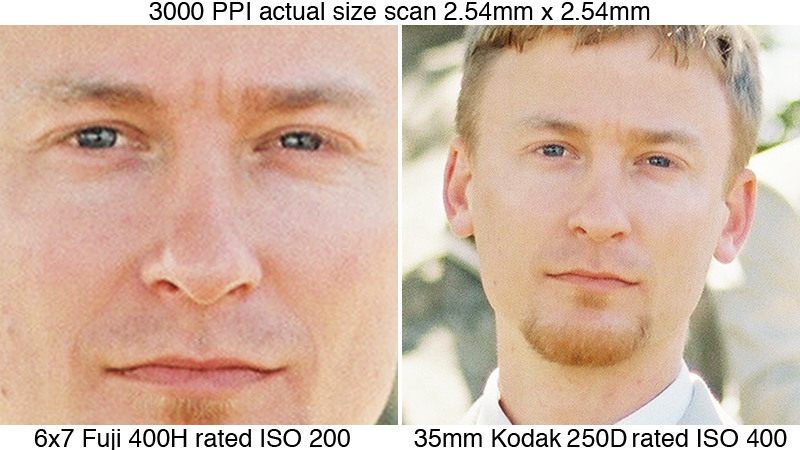skip to main |
skip to sidebar
 Stop holding your breath and crossing your fingers, because the time has finally come. A brand new film stock, unlike any before, is being released from Kodak! The new Portra400 "Incorporates Entertainment Imaging's KODAK VISION Film Technology" and is "the world’s finest grain high-speed color negative film" according to Eastman Kodak today. You know what this means? Still photographers will finally be able to capture the light that cinematographers have been spoiled with for years. You can see more on Kodaks website, KODAK PROFESSIONAL PORTRA 400 Film
Stop holding your breath and crossing your fingers, because the time has finally come. A brand new film stock, unlike any before, is being released from Kodak! The new Portra400 "Incorporates Entertainment Imaging's KODAK VISION Film Technology" and is "the world’s finest grain high-speed color negative film" according to Eastman Kodak today. You know what this means? Still photographers will finally be able to capture the light that cinematographers have been spoiled with for years. You can see more on Kodaks website, KODAK PROFESSIONAL PORTRA 400 Film
This is the dawn of a whole new line of light sensitive materials. Created for the hybrid workflow, the Vision technology harnesses light like no other emulsion. We have tested it's limits with our Nikon F3 250 exp. film backs, and processing at Technicolor for the past year. I cant tell you how excited I am! Vision in medium and large format! But not until October... So for now, in honor of the release of the new Kodak Portra400, we give you a taste of 35mm Vision technology.
35mm Kodak Vision3 250D up against Fuji PRO400H 6x7cm negative!
This is far from a fair comparison here. A 6x7 negative is 4 times the size of a 35mm frame, and the P67 SMC glass is the best around. I exposed 35mm 250D at ISO 400, and 220 400H at ISO 200. I performed straight scans of each on our Fuji Frontier at an 8x10 proportionate print resolution, then scaled directly to original magnification. You can see for yourself...


It is a brand new day and film is not dead, it's just entering a new generation. And it's heirs shall have more majesty as splendor than ever! c'mon... Say it with me... LONG LIVE FILM!

 Stop holding your breath and crossing your fingers, because the time has finally come. A brand new film stock, unlike any before, is being released from Kodak! The new Portra400 "Incorporates Entertainment Imaging's KODAK VISION Film Technology" and is "the world’s finest grain high-speed color negative film" according to Eastman Kodak today. You know what this means? Still photographers will finally be able to capture the light that cinematographers have been spoiled with for years. You can see more on Kodaks website, KODAK PROFESSIONAL PORTRA 400 Film
Stop holding your breath and crossing your fingers, because the time has finally come. A brand new film stock, unlike any before, is being released from Kodak! The new Portra400 "Incorporates Entertainment Imaging's KODAK VISION Film Technology" and is "the world’s finest grain high-speed color negative film" according to Eastman Kodak today. You know what this means? Still photographers will finally be able to capture the light that cinematographers have been spoiled with for years. You can see more on Kodaks website, KODAK PROFESSIONAL PORTRA 400 Film


16 comments:
Love this comparison.. amazing quality.. can't wait to get my hands on some.
Fantastic post as always love it.
Did you guys know this was coming? Or was it just a guess?
Also, there's a special processing step that needs to be done on the film you've been playing with, right? I assume Kodak isn't putting that opaque layer on the still-film version of this emulsion? Do you know anything beyond the tech specs on Kodak's site?
I won't say that you guys are responsible, but your work and your site have been the tipping point: I am now moving from being 100% digital for paid work, to some mix of film and digital that I haven't fully decided yet. Why should film be something I only use in my off hours, when what I really want is for my images to look like that ALL the time? It's a brave new/old world out there…
You are right Matt! The Vision movie films are ECN2 processing which is C-41 with one extra step that removes the protective/anti-halation layer that is on movie negative films.
And no we didn't have any conclusive inside info but it was an educated guess. Plus, if they didn't do it we were thinking about going after Imax films to try rolling our own 220. ;)
We know one of the photogs who tested it for Kodak and spoke with them a little. The base visually resembles almost exactly the Vision3 stocks we've worked with.
And amen to film being a viable option for client work. Your clients pay for your personal work too so why not shoot the good stuff on the assignments you care about? There should always be an overlap between personal work and client work.
Keep shooting film guys and we will keep getting amazing new films to shoot!
It might be an "unfair" comparison, but the new Portra held its own. This has made my week...month...year!
Awesome.
If you can't get to a lab that processes ecn2 it can be done in a normal C41 bath, you need to strip the remjet first which can be tricky.
A warm pre-wash of water and washing soda will loosen the remjet significantly. if you use your c41 chems as one shot then the rest of the chems will take care of any left over.
A final (careful) wipe of the film will clear up anything else.
et voila. ecn2 in your home.. lol.
a little dodgy but now we won't have a need to do it this way.. vision3 as a still film.... just magic.
@Neal Haven't tried that method myself yet but I hear it works! Thanks!
I agree with Matt about changing from digital to film for paid work. I borrowed a friends canon film slr earlier this year and was blown away by the results. Straight out of the camera is the result I want in digital and the B&W has no comparison. The only thing stopping a complete change to film for my wedding/portrait business is the crummy low light levels we get in UK. Now if Kodak/Fuji could produce a colour film capable of fine grain at 1600 then it would be a no brainer.
Great work on promoting the fim guys. Keep it going!
SWEET!
WOW! can't wait to try some!! great post :)
ECN-2 isn't C-41 with an extra step, it's a different developer formula run in a different process, it even uses a different developing agent, ECN-2 film also has a different contrast and gamma to C-41 film, Portra 400 will be a C-41 film (obviously) matched to the C-41 process and gamma.
@Dan Thanks for the input. You aren't wrong Dan. But based on real world experience and for all intensive purposes it is the same process with just another step. We spoke with the people at Kodak, Fuji, and Technicolor regarding this and found the main differences between the two processes are developing time/temperature, and that ECN-2 produces in a greater archival result. ECN-2 has a shorter development time to handle the volume of MP films. And yes the ECN-2 developing agent is CD-3 (used in RA-4, E-6, and ECN-2) and C-41 uses CD-4. So technically it's a cross-process. But with a near identical chemical reaction and identical results.
We have processed both C-41 and ECN-2 emulsions in both chemistries and found identical results for each emulsion.
Here are some examples of Vision3 developed in C-41 chemistry:
http://www.twinlenslife.com/2010/02/breakfast-eats.html
http://www.twinlenslife.com/2010/02/films-future-is-far-brighter-than.html
http://www.twinlenslife.com/2010/03/sullied-subway.html
http://www.twinlenslife.com/2010/03/norma-jean-and-clown.html
http://www.twinlenslife.com/2010/03/mega.html
We now go to Technicolor to process our 250 exposure cassettes of Vision film. They are actually the ones who told us it's basically the same chemistry as C-41 and based on the results I agree. We experience no difference in scanning film processed in either chemistry. Vision3 films always have more latitude and can be pushed with better results. But the gamma and contrast are inherent in the emulsions themselves, not the development. 400H in ECN-2 looks just like 400H.
Lastly, the base of the Vision film is more red than traditional C-41 stocks... So is the new Portra 400. I'm sure it's its own emulsion but it's likely more closely related to the Vision line than the Portra.
So wheres the point in all that? Just throw a 5D into comparison as well and the "new" Kodak will fall apart...
in case anyone was wondering... The tech data from Kodak tells me it IS Vision3 250D for C-41 process!
Side by side tech. data charts
HA HA HA HA! @Anonymous you're a funny guy. Oh, and I love your work btw. ;-)
dude, loving this pics, canñt wait for that film to get out.
Finally got my hands on some of the new Portra 400. My home scans probably don't do it justice, but I can say it's looking mighty fine! And by fine, I mean fine grain, even when shot at box speed. It actually looked less grainy than Fuji Reala 100 (at least in the shadow areas), which is astonishing. I just shot another two rolls this evening, which I will have professionally scanned. Having a true ISO 400 speed film with super low grain is a real boon…6x7 medium format finally becomes practical for family/children's on-location portrait photography, as the DOF and shutter speeds finally get where I need them to be.
I blame you guys for the almost obsessive searching I've done for this film. But in a good way. :)
URL is for my first Portra 400 results.
Post a Comment